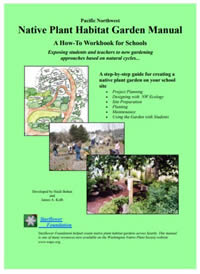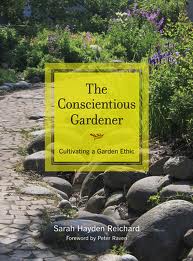 Sarah Reichard, the late Director of the University of Washington Botanic Gardens, is also the author of an important book for gardeners: The Conscientious Gardener: Cultivating a Garden Ethic. In reviewing this book, I must make a full disclosure–Sarah is also my new boss and someone I’ve known and worked with for many years.
Sarah Reichard, the late Director of the University of Washington Botanic Gardens, is also the author of an important book for gardeners: The Conscientious Gardener: Cultivating a Garden Ethic. In reviewing this book, I must make a full disclosure–Sarah is also my new boss and someone I’ve known and worked with for many years.
Reichard rightfully challenges gardeners to think outside of our individual gardens and see our role in the bigger system of both human endeavors and the natural world, and to see both the good and bad we can do. But she knows that being “good” isn’t easy! And being a long-time teacher, she uses a skillful blend of storytelling, humor, and breaking things down to easy steps to make her message understood but not overwhelming.
For example, in her chapter “Aliens among Us”, Reichard begins with the story of her concerns about introducing invasive plant species during a seed collecting trip early in her career. The scarcity of existing research led her to become a leader in the study of what makes plants invasive and the establishment and advocacy of guidelines for plant introductions in horticulture.
Recounting all this could be pretty heavy going, but she keeps it succinct and lightened with side boxes such as the role of the automobile (“Driving the Daisy”) in seed dispersion. Then, she both encourages, “Gardeners, take action!”, and tells how to do it, “Read on to plan your attack!” Like all chapters, this one ends with a set of Guidelines, very practical and doable steps each of us can take.
Excerpted from the Fall 2011 Arboretum Bulletin, by Brian Thompson.
Professor and UW Botanic Gardens director Sarah Reichard has her finger on the pulse of the planet in this erudite and accessible book. For those who have become complacent and fixed in their gardening ways, or for those just emerging as gardeners, there is much to learn in this handsome, information-rich volume. Are native plants always the preferred choice in our gardens? Do we really need soil amendments? Are we putting things on our lawns and landscapes that pollute nearby waters? What about those worms making compost in our worm bins: might they be invasive? Readers will discover that doing the right thing in our gardens is not only simpler than one might imagine, but deeply rewarding both personally and globally.
If you have been a persistent (but always polite!) thorn in the side of less conscientious (or simply unaware) gardeners and businesses who are purveyors of ivy and loosestrife, spreaders of weed-and-feed, and sprayers of pesticides, you will feel vindicated! If you have never spoken out before, you will feel inspired to do so! Reichard’s clearheaded call to action is well worth heeding.
Reviewed by Plant Answer Line librarian Rebecca Alexander, April 2011.
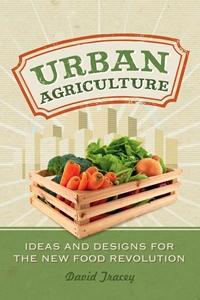 Though I personally am cheered by the sight of a P-Patch, a front garden, or a tiny apartment balcony resplendent with edible plants, there is still resistance to seeing raised beds replete with tomatoes and lettuce overtake a lawn or other underutilized space. Activist and arborist David Tracey’s
Though I personally am cheered by the sight of a P-Patch, a front garden, or a tiny apartment balcony resplendent with edible plants, there is still resistance to seeing raised beds replete with tomatoes and lettuce overtake a lawn or other underutilized space. Activist and arborist David Tracey’s 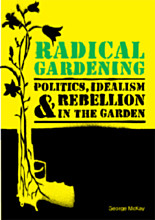 “The law condemns the man or woman
“The law condemns the man or woman Parents of enthusiastic young gardeners, and farmers’ market shoppers alike will love this useful guide to home-growing and cooking. It features easy, photo-illustrated recipes grouped by their main ingredients, so that chocolate zucchini cake is right next to zucchini salad and stir fry, allowing cooks to choose a recipe based on what they have on hand. Better yet, each chapter begins with step-by-step instructions for growing children’s favorites like herbs, peas, beans, and berries.
Parents of enthusiastic young gardeners, and farmers’ market shoppers alike will love this useful guide to home-growing and cooking. It features easy, photo-illustrated recipes grouped by their main ingredients, so that chocolate zucchini cake is right next to zucchini salad and stir fry, allowing cooks to choose a recipe based on what they have on hand. Better yet, each chapter begins with step-by-step instructions for growing children’s favorites like herbs, peas, beans, and berries.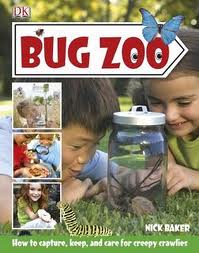 Does someone you know want an earwiggery? How about a wormery or a dragonfly den? If you know a child who loves bugs, this illustrated handbook of bug habitats will teach him or her how to capture, observe, and learn from these tiny animals respectfully, with an understanding of their delicate biology.
Does someone you know want an earwiggery? How about a wormery or a dragonfly den? If you know a child who loves bugs, this illustrated handbook of bug habitats will teach him or her how to capture, observe, and learn from these tiny animals respectfully, with an understanding of their delicate biology.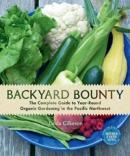 Amidst the bumper crop of new food-gardening titles, Backyard Bounty : The Complete Guide to Year-Round Organic Gardening in the Pacific Northwest by Salt Spring Island, B.C. resident Linda Gilkeson stands apart. I put three recent edible plant titles by Northwest authors to the test by trying to find answers to commonly asked questions in them. Whether you are a beginning gardener or an experienced (or jaded!) old hand, this book will neither insult your intelligence nor blind you in a blizzard of technicalities. If you want to know about soil in raised beds, what to grow over the winter, or how to protect your grapes from predacious raccoons, this is the place. Though it lacks photos of primped and prinked up fruit and veggie glamour, the information is well-organized and clearly presented. I learned enough from reading it that I may just have to own a copy.
Amidst the bumper crop of new food-gardening titles, Backyard Bounty : The Complete Guide to Year-Round Organic Gardening in the Pacific Northwest by Salt Spring Island, B.C. resident Linda Gilkeson stands apart. I put three recent edible plant titles by Northwest authors to the test by trying to find answers to commonly asked questions in them. Whether you are a beginning gardener or an experienced (or jaded!) old hand, this book will neither insult your intelligence nor blind you in a blizzard of technicalities. If you want to know about soil in raised beds, what to grow over the winter, or how to protect your grapes from predacious raccoons, this is the place. Though it lacks photos of primped and prinked up fruit and veggie glamour, the information is well-organized and clearly presented. I learned enough from reading it that I may just have to own a copy.![[The Gossler Guide to the Best Hardy Shrubs] cover](https://depts.washington.edu/hortlib/graphix/gosslerguide.jpg)
![[In My Nature] cover](https://depts.washington.edu/hortlib/graphix/inmynature.jpg)
![[Living with Bugs] cover](https://depts.washington.edu/hortlib/graphix/livingwithbugs.jpg)
